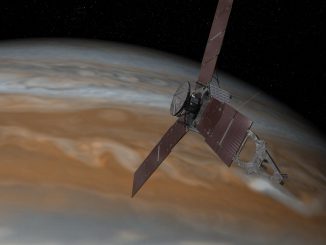
Jupiter

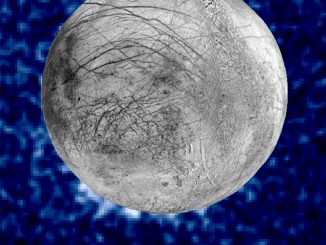
Hubble spots possible water plumes erupting on Jupiter’s moon Europa
Astronomers using NASA’s Hubble Space Telescope have imaged what may be water vapour plumes erupting 125 miles (200 kilometres) off the surface of Jupiter’s moon Europa. Europa has a huge global ocean containing twice as much water as Earth’s oceans, but it is protected by a layer of extremely cold and hard ice of unknown thickness.
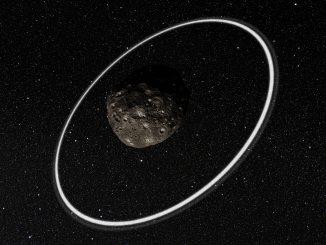
Origin of minor planets’ rings revealed
Chariklo is the largest confirmed centaur, a minor planet orbiting the Sun between Saturn and Uranus. In 2014, two rings were discovered around Chariklo. Soon after, scientists discovered that rings likely exist around another centaur, Chiron, but the origin of these rings remained a mystery — until now.
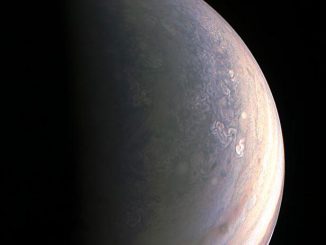
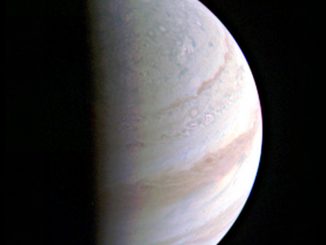
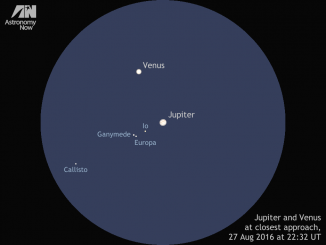
Jupiter and Venus get extra close in the evening sky
On Saturday 27 August at 22:32 UT (11:32pm BST), a spectacularly close conjunction occurs between Jupiter and Venus just 22 degrees west of the Sun in the constellation of Virgo, when the planetary pair are just 4 arcminutes, or one-fifteenth of a degree, apart. Here is our guide to the best locations and times to view this rare event.

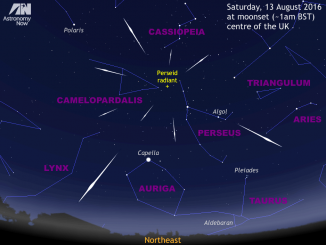
Get ready for the Perseid meteor shower peak of 11-12 August
With a waxing gibbous Moon setting at 1am BST for the UK on the night of 12-13 August, observers will have dark skies for what could be a Perseid meteor shower to remember. Some theorists believe that Jupiter’s gravitational influence has deflected more particles from parent comet 109P/Swift-Tuttle into Earth’s path for a spectacular show.
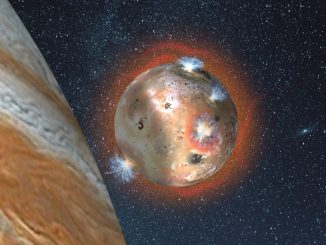
Freezing effects of Jupiter’s shadow on Io’s volcanic gases revealed
A team of scientists has documented atmospheric changes on Io, Jupiter’s volcanically active satellite, as the giant planet casts its shadow over the moon during daily eclipses. Io’s thin atmosphere collapses as the sulfur dioxide gas emitted from volcanoes freezes when shaded by Jupiter. The atmosphere reforms when Io moves out of eclipse and the ice sublimates.
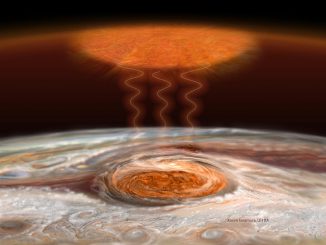
Jupiter’s Great Red Spot heats planet’s upper atmosphere
Astronomers from Boston University have discovered that Jupiter’s Great Red Spot (GRS) may provide the mysterious source of energy required to heat the planet’s upper atmosphere to the unusually high values observed. Heating in Jupiter’s atmosphere 500 miles above the GRS is thought to be caused by gravity waves and acoustic waves creating turbulent atmospheric flows.
